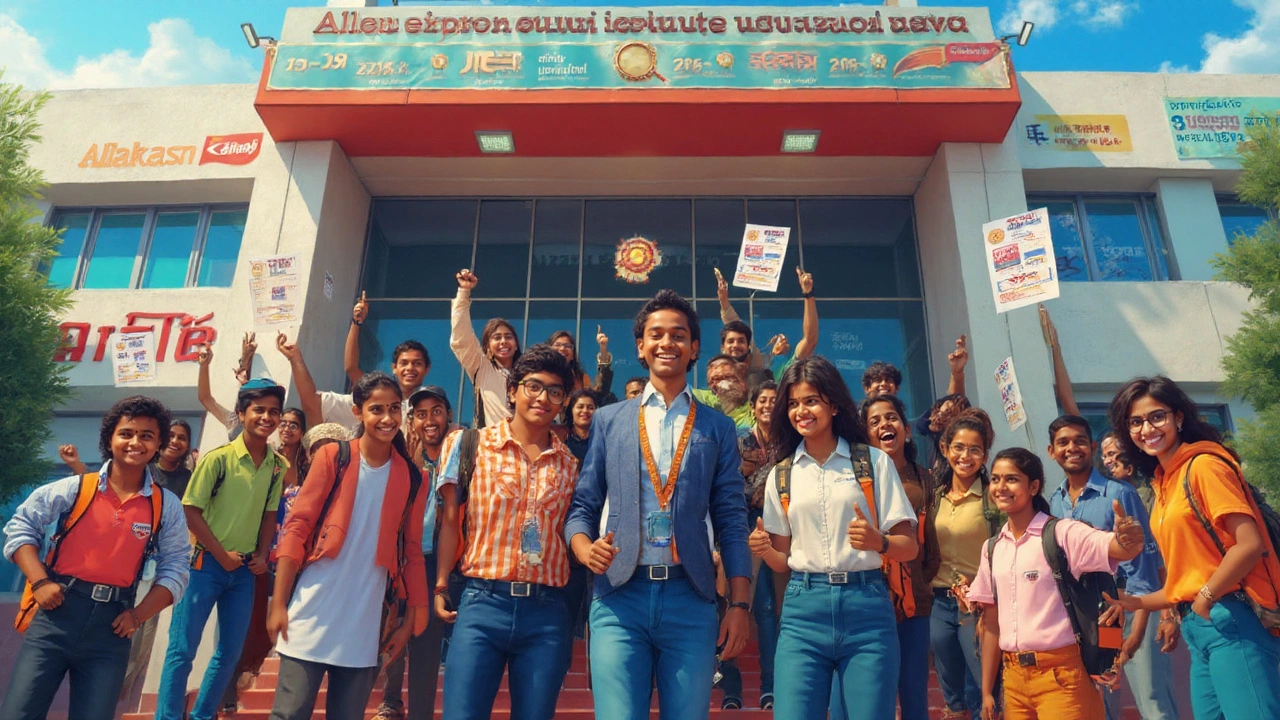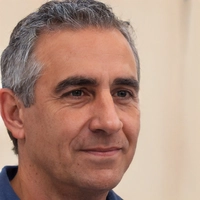
Allen vs Aakash: Which Coaching Institute Is Best for NEET & JEE Preparation?
Pick up any street-side chai in Kota and someone at the table will have a strong opinion about Allen or Aakash. These aren't just two brands—they're forces behind India's crush of students dreaming of cracking NEET or JEE. If you’re here, chances are you (or someone you know) is on the fence about which is better. The rivalry between Allen and Aakash isn’t just about classes—it’s about who wins the race to top ranks, and who builds a real support system along the way. Let’s get into it—with facts, stats, hard truths, and a few tips the glossy brochures won’t tell you.
Backgrounds You Should Know: From Kota to Nationwide Fame
Before you argue about which is better, you need to know where these brands come from. Allen started in 1988 out of Kota, that tiny city in Rajasthan which is now a household name among aspiring doctors and engineers. It’s famous for competing hostels, endless bookstores, and students basically living and breathing exams. Allen rode this wave to the very top, making its name with huge batches and a laser focus on medical and engineering entrance exams.
Aakash, on the other hand, took a different route. Aakash came up in 1988 as well, but from Delhi. Their edge was a more classroom-like approach, smaller batches (at least at first), a push for organized study plans, and a brand image less pressure-cooker and more student-friendly—at least in their advertisements. They pushed franchise models and online platforms early, expanding to over 300 centres nationwide.
Fast forward to today, and both are national giants. Allen has more than 2.5 lakh students enrolled for classroom programs each year, with Kota as their main castle. Aakash, now merged with BYJU’S in a deal worth about $950 million in 2021, has over 250 branches and has doubled down on both online and offline courses. If you’re judging by size, it’s Allen in terms of a physical presence in competitive exam hubs, while Aakash has gone deep into digital.
Here’s a quick look at their scale:
| Coaching | Year Founded | Physical Centers (India) | Students (Annually, Est.) | Big Milestone |
|---|---|---|---|---|
| Allen | 1988 | 80+ | 275,000+ | Kota headquarters, Exam toppers |
| Aakash | 1988 | 300+ | 250,000+ | BYJU'S acquisition |
Knowing the roots and scale isn’t just trivia—it tells you about how lessons are delivered, where their strengths are, and what kind of crowd you’ll be joining.
Faculty Quality and Teaching Styles: What Actually Happens in Class?
This feels like the meat of the argument. Both Allen and Aakash make big claims about their teachers, but you need more than pamphlet talk. Allen draws some of the most experienced teachers from across the country, with a system built on regular rotations, meaning you can get different faculty in the same subject within one year. Some love this, saying you get broader perspectives. Others get frustrated by shifting teaching styles and changing explanations right before exams.
Aakash, known for a bit more stability in their faculty teams, tends to have teachers assigned for an entire academic year. They push for personal guidance through doubt sessions and smaller "talent pool" batches for top scorers. They lean on teaching with visual aids, smart boards, and digital content, especially since merging with BYJU’S. If you’re the kind of student who needs consistency and structured plans, Aakash fits better. If you’d rather have big names and a competitive, fast-paced vibe, Allen delivers that.
Then there’s doubt solving. Allen has "Doubt Counters" at most centers—huge halls where you queue to discuss personal problems with available faculty. Intense, sometimes crowded, but if you’re proactive, you’ll get help. Aakash arranges appointment-based one-on-one sessions, which many students say feels less rushed. Allen's homework loads can feel cranked to 11, with daily practice problems and weekly tests. Aakash focuses on monthly tests and more curated assignments, but they’re no cakewalk either.
Talking success rates—Allen regularly flashes the highest number of NEET and JEE toppers nationally. In NEET 2024, Allen claimed 34 students in the top 100 AIR. Aakash boasted 19. For JEE Advanced 2024, Allen again had the edge, but Aakash caught up with more students qualifying than in previous years. Still, the pressure at Allen to stay in the "star batch" can break even the strong-willed if you don’t have coping habits in place.
If you’re thinking about online classes, Aakash’s digital experience shows—they’ve built slick platforms, with recorded lectures, tests you can take anytime, and quick customer support. Allen is catching up here but still relies on live online batches that mimic their physical centers’ experience, so it feels more like a scheduled, competitive classroom.

Study Material, Test Patterns, and Mock Exams: How Do They Compare?
This stuff can make or break your prep year. Allen’s study packages are legendary—printed modules, hundreds of topic-wise handouts, "Major Test Series" every few weeks, all based on deep NEET and JEE trend analysis. Every year, students complain there’s almost too much; you’ll never see the end of the material, but if you stick with it, you’re pretty much bulletproof for the syllabus.
Aakash’s material is branded as concise, more to-the-point, and a bit friendlier for revision. They put out weekly assignments, monthly quizzes, and have a big focus on previous years’ questions. Both pitch "All India Test Series" as a game-changer. Allen’s is infamous for high difficulty and mirrors the real exam’s unpredictability. Aakash’s All India Aakash Test Series (AIATS) is known for its accuracy in predicting actual NEET and JEE question distribution.
What’s interesting: Students in both say Allen’s stuff can sometimes feel overwhelming, which isn’t ideal if you’re coming from a school where teachers handhold you through every chapter. Aakash is slightly less intimidating for those who like structure but still need reminders. For self-learners, Allen’s gigantic pool of questions is gold. If you want tight, digestible content (especially if you’re revising for the second or third time), Aakash is a safer bet.
Don’t ignore practice test pressure. Allen has “board exam-style” halls for their mocks, complete with strict invigilators and time warnings—it gets your nerves in shape. Aakash tries for the same, and their online mocks are very smooth, with instant analysis and peer ranking.
Let’s size up what they offer, side by side:
| Criteria | Allen | Aakash |
|---|---|---|
| Material Depth | Huge, exhaustive, trend-based | Concise, focused, regularly updated |
| Test Series | Major Test Series, tough, Kota-style | AIATS, predictive, adaptive |
| Online Platform | Improving, live batches | Advanced, BYJU’S tech, on-demand |
| Doubt Solving | Doubt Counters, group sessions | Appointment-based, personal focus |
Student Life: Stress, Peer Groups, and What It Feels Like Day to Day
You can talk about batches and materials all day, but you live through the year, not in brochures. If you join Allen in Kota, get ready—it’s like a city made for and by students. You’ll meet fierce competition, 8 am to 8 pm schedule, hundreds of classmates, and a heavy sense of “every second counts.” The crowd is huge. Peer pressure is everywhere. Allen’s “star batches” push toppers ahead, offering extra classes and more personal mentoring, while average and back-bencher batches tend to see less interaction with senior faculty. If you’re a natural hustler, this energy can fire you up. But if not, the environment gets heavy fast, especially during test season.
Aakash’s centers are usually smaller, which gives a more personalized vibe. Their centers in metro cities like Delhi, Mumbai, and Bangalore mix in-school and repeaters in the same campus. This can be less competitive but also less thrilling if you crave that pressure-cooker feel. The stress is still there, just not quite as intense as the Kota experience. There’s more pastoral care—counsellors and regular feedback meetings with parents, which helps students who might otherwise fall through the cracks.
Living in Kota for Allen doesn’t mean everyone stays in a hostel. Many locals join as day scholars, while outsiders rent flats or hostels nearby. Your daily routine is all about getting to class on time, grabbing food in between, and putting in 6-8 hours of after-class study. The "Allen Samosa" is a local legend—fuel for tired brains in the break. Aakash students, often living at home in big cities, balance school work and coaching together, eating home food and keeping their old routines, which can ease culture shock.
No matter which you choose, burnout lurks if you don’t watch your mental health. Allen has started support groups after some tough years dealing with student stress headlines, hiring counsellors and running workshops. Aakash builds mentorships and family check-ins, which can make a difference for those who need steady emotional backing.

Fee Structure, Scholarships, and Final Tips: Getting the Most Out of Your Choice
Here’s where the numbers matter hard. Both Allen and Aakash aren’t cheap, but both run scholarship tests that can chop a big chunk off your fees. For a two-year NEET or JEE classroom program in 2025, here’s what you’re likely to pay (rounded to the nearest ₹10,000):
| Coaching | 2-Year Course Fee (Class XI-XII) | 1-Year Dropper Fee | Online Only (1 Year) | Maximum Scholarship (by test or achievement) |
|---|---|---|---|---|
| Allen | ₹165,000 - ₹185,000 | ₹110,000 - ₹130,000 | ₹60,000 - ₹80,000 | Up to 90% |
| Aakash | ₹170,000 - ₹190,000 | ₹115,000 - ₹135,000 | ₹55,000 - ₹75,000 | Up to 100% (in rare cases) |
Allen’s ASAT (Allen Scholarship Admission Test) and Aakash’s ANTHE (Aakash National Talent Hunt Exam) both draw lakhs of applicants. Scoring big can almost pay your way, but it’s cut-throat. If you’re coming from a smaller town and worried about the cost, leverage these tests, and don’t forget about other state-level scholarships if you qualify.
Here’s a trick: If you’re on the fence, visit the centers, talk to current students, ask to sit in for a demo class, and read public forums and Telegram groups for unfiltered reviews. Ignore overhyped YouTube testimonials and look for people discussing day-to-day realities. Also, both centers can negotiate on fees and give sibling or alumni discounts—don’t be afraid to ask.
Quick reminders to get the most out of your choice:
- If you want maximum grind, face-to-face Kota energy, and a ruthlessly competitive environment, Allen is your place.
- If you prefer structured lessons, smoother online options, or are juggling school and coaching, Aakash is likely a better fit.
- Got weak basics or anxiety about a huge crowd? Aakash’s batch system and personal focus are easier to handle.
- If you’re a self-starter or want to rub shoulders with top rankers, Allen puts you in the thick of the action.
- The biggest NEET and JEE toppers still come from both, so hard work matters more than the name on your study kit.
Both Allen and Aakash give you the keys—what you do with them is what sets you apart. Pick the environment that matches your study style, not just the brand that everyone else is shouting about. In the end, the right answer isn’t in the banners but in how you put all these resources to work for NEET coaching or JEE madness. Good luck—you’re going to need grit more than perfect study notes.






Write a comment